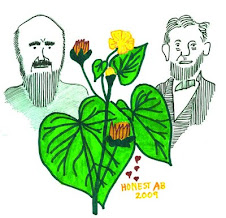My
main purpose in my social media is to help you make better sense of the world
and your life in it. I do this primarily by sharing my scientific understanding
and my personal experiences. My social media (just two blogs, here and here,
and video channel) have now had over 900,000 visits. The main traffic is from search engines. This means that most of my readers are
not followers but are finding my work because they are searching for insights
not about me but about the topics I write about. And that is just the way I
like it.
Perhaps
the most fundamental question we have about ourselves and the world is, who am
I? This question is of interest not just to me, but to whoever might read this
essay.
What,
exactly, is the real me? There is no easy answer to this question. Each of us
consists of at least two general things: the self that we want to be, and the
self that we are subconsciously.
Over
the first of these we have a measure of control. We can control what we think,
the decisions we make, the kinds of interactions we have with people, the
things we say. This is generally the self that we present to the world. Some
people think this is a false face, merely an image of what we want people to
think about us. But we all know it is much more than this. It is the self that
we want to be, not just how we want to appear.
Over
the second of these we have less control. We can generally control what we say,
but sometimes we blurt things out before we have a chance to think about them.
Curses, for example, come from a different part of the brain than regular
speech. Most of us cannot control our dreams, either. When we experience things
that make us angry or lusty, our heartbeats and breathing become more rapid,
and there are other physiological responses that I do not need to tell you
about, even if we try to calm ourselves down. These things make up the self
that we do not want to be, not merely the things we wish to keep hidden.
Over
some things, we have an intermediate level of control. For example, my blood
sugar is high, enough for me to require medication but not drastic
intervention. I cannot completely control it. It is my cell membranes that do
not absorb enough of it from my blood. The main thing I can do is to eat less
sugar. Medication and eating less sugar has reduced my blood sugar down from
the crisis level it used to be. Blood sugar level is the result both of things
I can control and things I cannot.
I
suggest that the real me, and the real you, are the first of the two. They
are the most highly developed systems in our evolutionary history. The second
“self” has an ancient origin that goes back at least to the origin of the
vertebrates. At least, I think so. Do fishes get angry?
Another
way of dividing ourselves up into the selves we want and the selves we hide is
to consider the things over which our DNA has direct control. Our DNA does not
control everything about our bodies. It controls the structure of our brains,
nerves, muscles, bones, and systems such as the digestive system. It controls,
basically, everything that is within our epidermis and mucous membranes. But it
does not control what is outside of our bodies, which includes the
things that are in our digestive system.
The
contents of our intestines includes not just the partially-digested things that
we have decided to eat (which is under our conscious control) but also
trillions of bacteria and other microbes. We cannot control what those microbes
do. They metabolize, to get energy and nutrients for themselves, and eject
their wastes into our intestines. These wastes include carbon dioxide
(odorless), methane (odorless), and hydrogen sulfide (the smell of farts).
Though we can to a certain extent influence their timing, neither we nor our
DNA can control our farts. The cosmos inside our intestines is a wild world
over which we have no control other than diet (yogurt helps) and medicine.
And
our digestive system responds not so much to us—our nervous system, or even our
DNA—as to the wild world in our intestines. When the bacteria in the food
produce a lot of gas, they expand the intestine. Local nerve networks take care
of what happens next. Intestinal nerves detect the expansion, then cause the
smooth muscles around the intestine to start contracting, which will push the
food and the farts along further down the line. One result is that when a fart
is on the way, you can’t stop it. Another result is that when you gotta go, you
gotta go. Your brain can control the muscles at the end of the line, the
sphincter muscles, to try to hold it in, but success is not guaranteed.
So
another view of yourself is that the real you is what the DNA controls, and the
secret you is what your bacteria do.
So
when an honest biographer says, regarding the subject, which might be you or
me, “he or she tells the true story, warts and all” (maybe farts and all), this
is not really being honest. Warts are caused by viruses, and farts by bacteria.
Your honest biography would be what your DNA does, and what you decide to do,
rather than by the random, uncontrollable activities of your bacteria or your
subconscious mind.
The
bacteria and subconscious mind are not always bad. Having written what I just
wrote, and living a more relaxed life, both the products of the real me, have
an effect on what my subconscious mind and even my bacteria do.
I
hope this helps. And tell your bacteria that I said hi.







